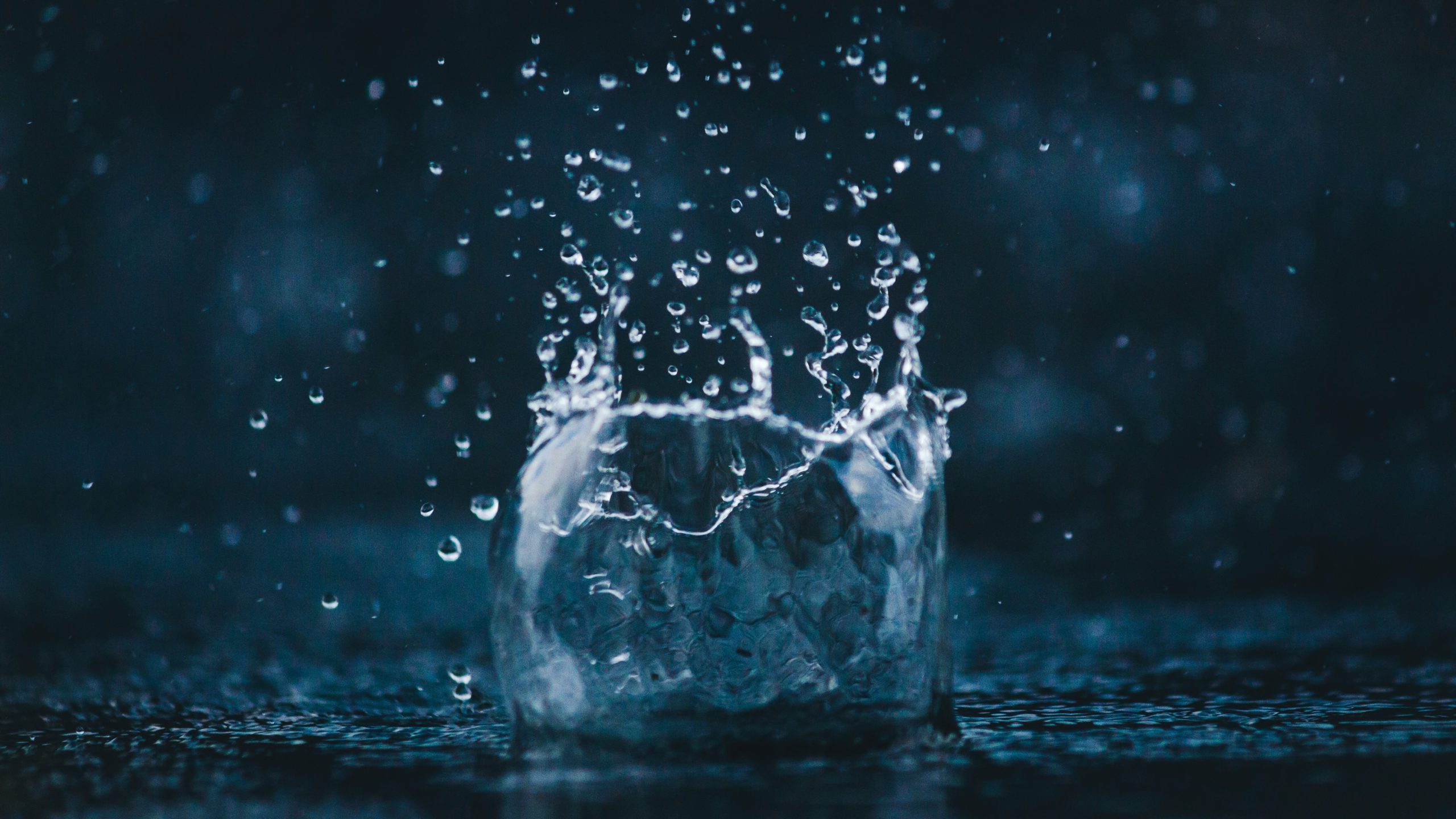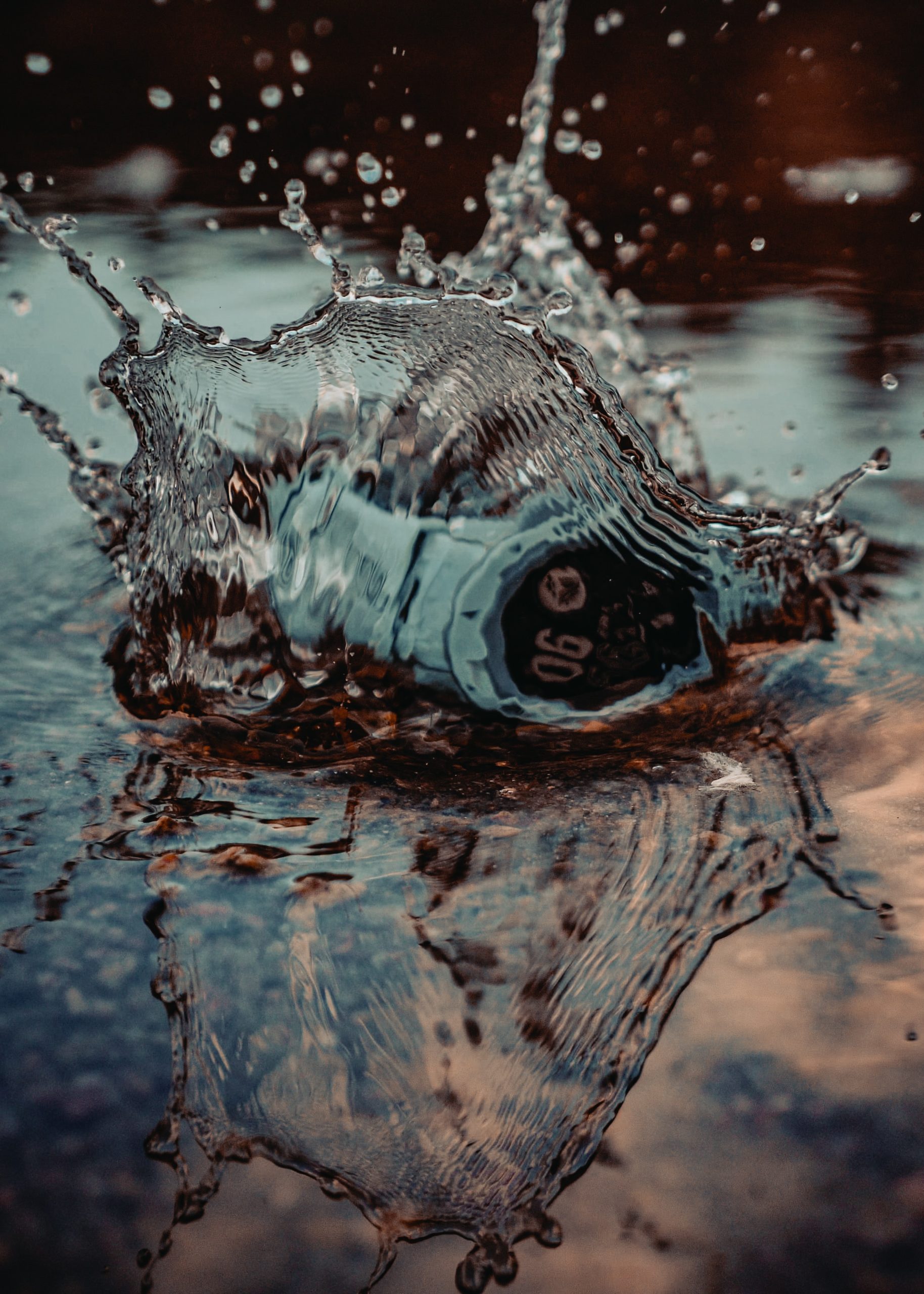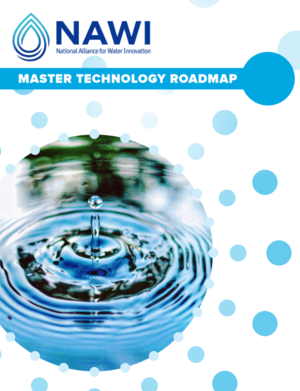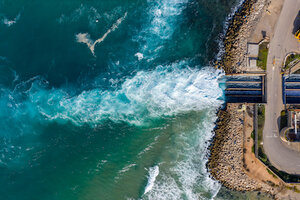
Image Credit: Amadej Tauses on Unsplash
The U.S. Department of Energy (DOE) and the National Alliance for Water Innovation (NAWI), in collaboration with the California Department of Water Resources, today announced the selection of 11 projects for negotiation that will pilot breakthrough technologies and systems that will allow for more reliable and affordable freshwater supplies for the United States. The projects will also contribute to the decarbonization of the water and wastewater sectors through investments in technologies that enhance the efficient use of energy in the use, treatment, and distribution of water.
The selected pilot projects will process non-traditional source waters from a range of locations and produce water in real-world environments. In some cases, projects will partner directly with communities and groups that have historically been underserved by existing water supplies. The research will help to bolster a circular water economy by supporting water reuse and valorizing constituents we currently consider to be waste. Each project will also generate a range of data sets usable by other researchers seeking to advance the field of data analysis and automation, and fault detection in water treatment systems.
The collaborative project teams of industry, academic, national laboratory, and other stakeholders will deliver impact aligned with NAWI’s pipe parity metrics. Pipe parity is defined as technology solutions for treating and reusing nontraditional water sources that are competitive with conventional water sources for specific end use applications.
These pilot systems will directly address the highest priority research needs and technical knowledge gaps outlined in the NAWI Roadmap Publication Series, which was published in 2021.
The selected projects include:
(Listed in no particular order)
- Concentrate Treatment and Chemical Production Using Innovative Electrodialysis Processes for Near Zero-Waste Discharge
Desalination technologies typically extract a fraction of pure water and leave behind a salty residual liquid called brine or concentrate that is expensive and difficult to dispose of at inland desalination facilities. This project is focused on the design and build of a novel process to further concentrate the brine using electrodialysis, producing more water and transforming the dissolved salts into valuable industrial chemicals. The pilot system will be fielded at the Kay Bailey Hutcheson Desalination Plant in El Paso, Texas.
Partners: New Mexico State University (lead); Veolia Water Technologies and Solutions, Inc.
- Switchable Solvent ZLD Process for Solving the Inland Desalination Brine Problem
Desalinating and reusing municipal, industrial and agricultural wastewater is an attractive approach for improving the reliability and resilience of water resources. But the presence of dissolved minerals that can plug RO membranes and modules (a process called scaling) limits the amount of water that can be recovered using membrane processes such as RO. This project aims to integrate a novel, high-efficiency process for removing scale-forming ions from brine concentrates, enabling much higher amounts of water recovery and smaller volumes of waste brine. The mobile testbed will demonstrate high-recovery desalination at five sites in California.
Partners: Global Water Innovations, Inc. (lead); Trevi Systems, Inc.
- Mobile Test Bed for Marginal Water Filtration
Water pre-treatment (before desalination) remains a critical process step for maximizing water production and lowering desalination cost. Current pretreatment technologies are large, slow, and multi-step, making them suitable for large desalination projects but clumsy and less effective for small-scale systems. This project will integrate a novel high-performance nanofiltration membrane system as pretreatment alongside two variants of electrocoagulation as a high-efficiency, all-electric pretreatment strategy. The mobile testbed developed by this team will travel to several sites around Albuquerque, New Mexico, evaluating high-efficiency desalination of different non-traditional water sources.
Partners: Garver USA (lead); City of Rio Rancho, New Mexico; the University of California, Los Angeles; NX Filtration, University of Colorado-Boulder; WaterTectonics, Inc; Rockwell Automation; Powel Water
- Salt-Free Electrodialysis Metathesis (EDM) for High-Recovery Concentrate Management
Electrodialysis Metathesis (EDM) is a desalination process that uses specialized membranes and chemistry to produce fresh water while transforming the residual brine into two streams – a calcium-rich solution and a sulfate-rich solution. These two streams can be further refined into valuable industrial chemicals, producing a secondary revenue stream from desalination – and reducing the volume of waste brine. Until now, EDM has required the addition of sodium chloride (NaCl) to supply required ions for these solutions. In this project, a new ion-selective membrane technology will be utilized that will eliminate the need for additional NaCl and may lower the energy requirements of traditional EDM by as much as 50%. The system will be tested at the U.S. Bureau of Reclamation’s Brackish Groundwater National Desalination Research Facility (BGNDRF) in Alamogordo, New Mexico.
Partners: University of Texas, El Paso; New Mexico State University
- UHP-CCRO with Virtual Curtain to Achieve Minimal Liquid Discharge
Softening is the process of removing certain ions from water that otherwise precipitate during the desalination process, limiting the amount of water that can be recovered from inland brackish water sources using RO. This project proposes to use a novel softening technology to selectively remove these scale-forming ions by forcing the precipitation in the form of hydrotalcite – a mineral that is made from these ions – that could be used as a soil amendment or as an additive for concrete.
Partners: Jacobs Engineering (lead); New Mexico State University; Commonwealth Scientific and Industrial Research Organisation; DuPont
- Mobile Demonstration DPR: Comparison of RO and non-RO DPR for aerobic and anaerobic effluents
Municipal wastewater can be reprocessed into drinking quality water. Reverse osmosis (RO) has traditionally been a final treatment step that can provide the high purity required to satisfy drinking water quality regulations, but RO generates a brine waste stream and drives up the cost and energy required for direct potable reuse (DPR). This project will perform a side-by-side demonstration at Silicon Valley Clean Water’s treatment plant in Redwood City, California, of both an RO-based treatment train and a novel treatment train that achieves nearly the same purity without using RO. The team will also investigate how different types of wastewater treatment technologies produce effluents that are either easier or harder to transform into drinking quality water.
Partners: Colorado School of Mines (lead); Stanford University; University of Colorado, Boulder
- Piloting an Electrical, Modular, and Distributed ZLD Arsenic-Removal Technology
Arsenic is a pervasive, naturally occurring carcinogenic contaminant in groundwater. Thousands of wells in California and around the world have arsenic levels that exceed safe levels, forcing communities to install expensive and hard-to-operate treatment systems or shutter their local wells and travel miles to fill water jugs for home use. This project will demonstrate a new simple, reliable and highly automated electrochemical process that uses iron and electrical current to safely remove arsenic in well water. The team will partner with the community of Allensworth, California, a rural community whose residents must drive miles to pay for retail water from a kiosk.
Partners: University of California, Berkeley (lead); Allensworth Progressive Association
- Reciprocating Piston Batch Reverse Osmosis: Pushing the limits of efficiency and fouling resistance
Conventional reverse osmosis utilizes high pressure pumps to continuously supply pressure into RO modules and generate fresh water. This steady-state process can result in the gradual build-up of organic and inorganic precipitates on membrane surfaces (known as fouling), which reduces water production and requires frequent cleaning. This project will demonstrate a novel batch-mode process whereby RO modules are pressurized using a piston-based pump and fresh water is produced in a non-continuous process. This approach to reverse osmosis not only uses less energy but may also greatly reduce the rate of fouling of membrane surfaces.
Partners: Purdue University (lead); Colorado School of Mines; Oak Ridge National Laboratory
- Integrated Counter-Flow Reverse Osmosis Treatment for High-Salinity Produced Water
High salinity produced water is predominant in U.S. oilfields. Reverse osmosis (RO) has been used to desalinate low-salinity produced water, but has a salinity limit below that of most U.S. produced waters. This project will field a novel advancement that uses commercial RO membranes and infrastructure, and counterflow RO (CFRO) in order to enable treatment of high salinity water by managing the osmotic pressure differential across the membranes of sequential stages in a counter-flow arrangement.
Partners: Aris Water (lead); New Mexico State University; Texas Agricultural and Mechanical University; Stanford Linear Accelerator Center; Garver, OLISoft, Inc.
- Field Pilot Testing of Electrically Conductive Reverse Osmosis (ECRO) Membranes for High Mineral Content Brackish Groundwater Desalination
Unconventional and difficult-to-treat water resources, such as brackish groundwater, have complex chemistries, and treating them to freshwater levels requires complex processes consisting of multiple stages of pre-treatment followed by membrane desalination, making them costly and difficult to operate which limit their widespread application and adoption by society and various industries. Both ECNF and ECRO use combinations of applied electrical fields and in situ electrochemical generation to actively resist membrane fouling – the deposition of particles onto membrane surfaces that causes pore clogging and diminished performance over time. The project will operate the pilot system as two parallel trains to evaluate the head-to-head performance of ECRO compared with conventional RO at Sand City, California.
Partners: Pacific Water Solutions, Inc.
- A Convergent Monitoring Platform for Dynamic Characterization of Reverse Osmosis Membrane Fouling and Demonstration of Innovative Control Strategies
Membrane fouling and scaling is a pervasive and costly aspect of many membrane-based water treatment systems. This project will demonstrate and validate an unprecedented sensing/time series monitoring system at Orange County Water District for the dynamic characterization of reverse osmosis (RO) biofouling, mineral scaling, and organic fouling. The data obtained from this system will be combined with pilot and full-scale RO performance data to train next-generation Machine Learning (ML) and Artificial Intelligence (AI) models to better forecast and mitigate fouling and scaling. This project will also evaluate novel sensor technologies and a new commercial membrane technology that can resist the application of oxidizing cleaning chemicals.
Partners: Rice University (lead); University of Texas, Austin; University of Tennessee, Knoxville; Oak Ridge National Laboratory; Orange County Water District; Noria Water Technologies, Inc., NALA Membranes, Inc.; Carollo Engineers
NAWI is a public-private partnership that brings together a world-class team of industry and academic partners to examine the critical technical barriers and research needed to radically lower the cost and energy of desalination. NAWI is led by DOE’s Lawrence Berkeley National Laboratory in collaboration with National Energy Technology Laboratory, National Renewable Energy Laboratory, and Oak Ridge National Laboratory, and is funded by the Office of Energy Efficiency and Renewable Energy’s Industrial Efficiency and Decarbonization Office.




I teach a course on water innovation, and would like to keep updated with your progress in the future.